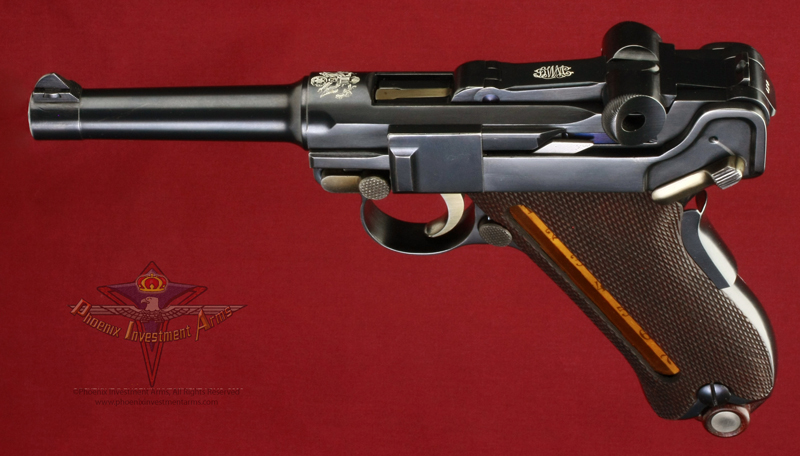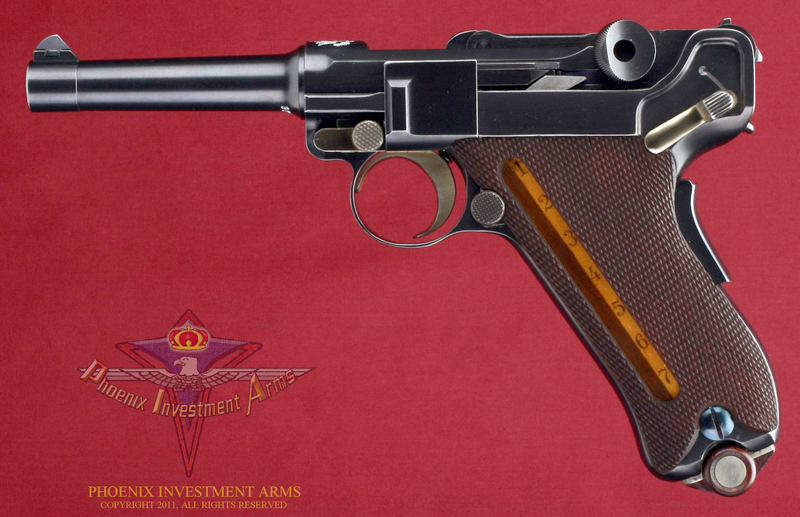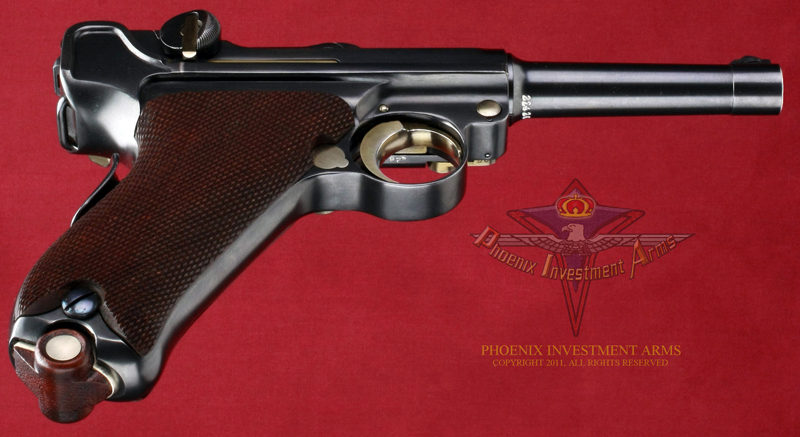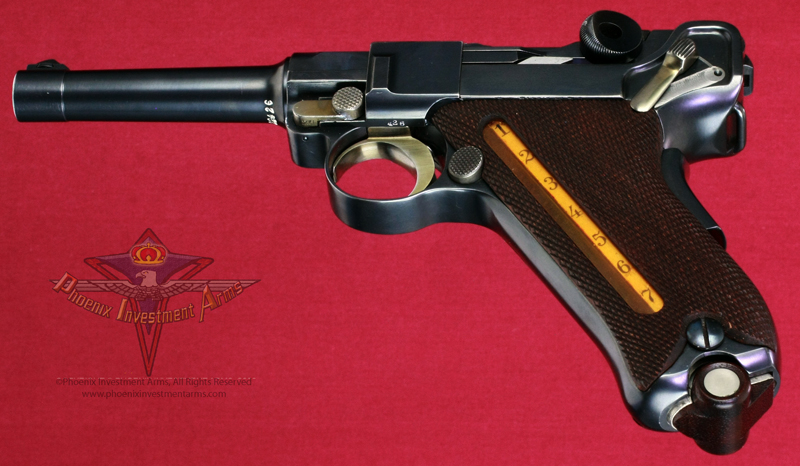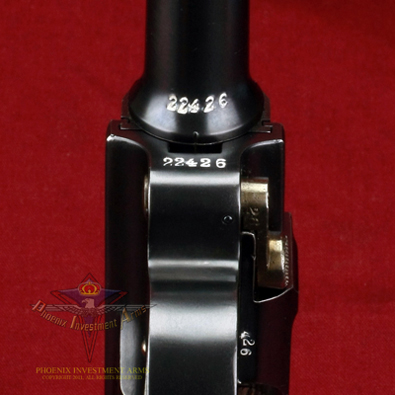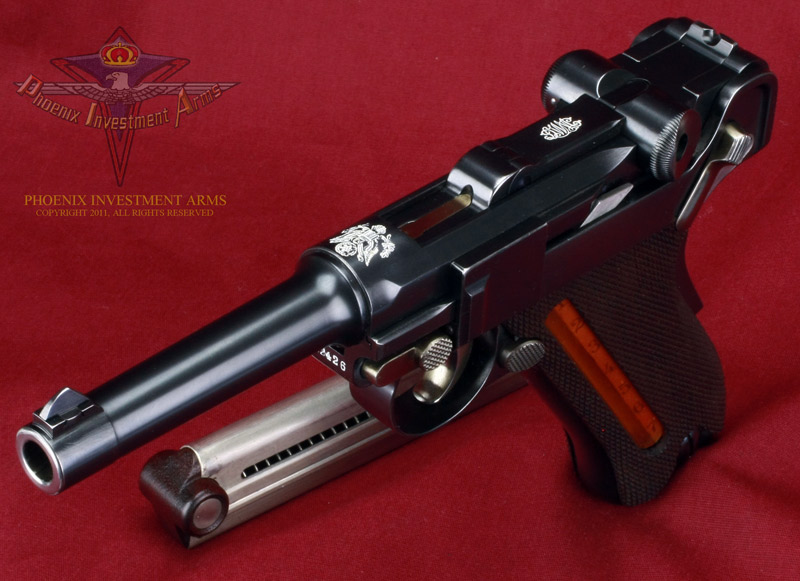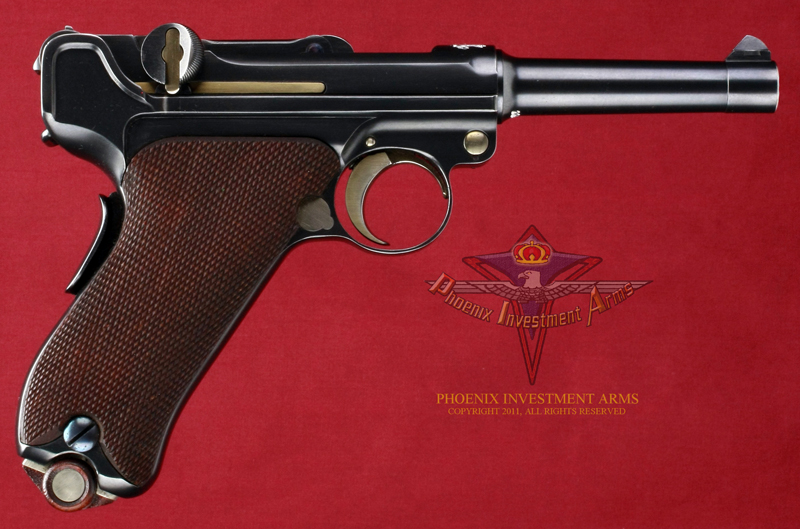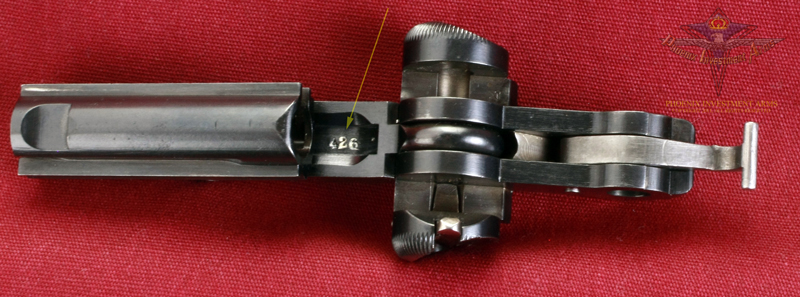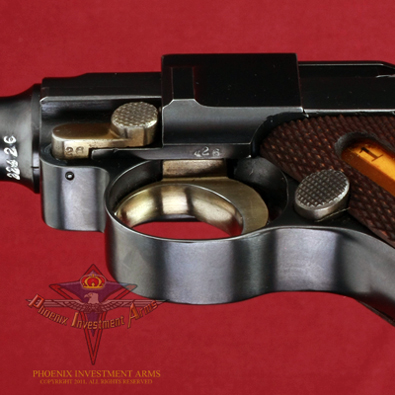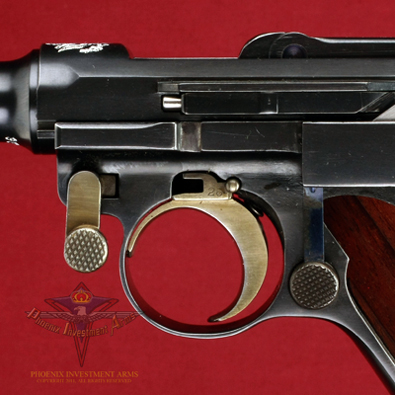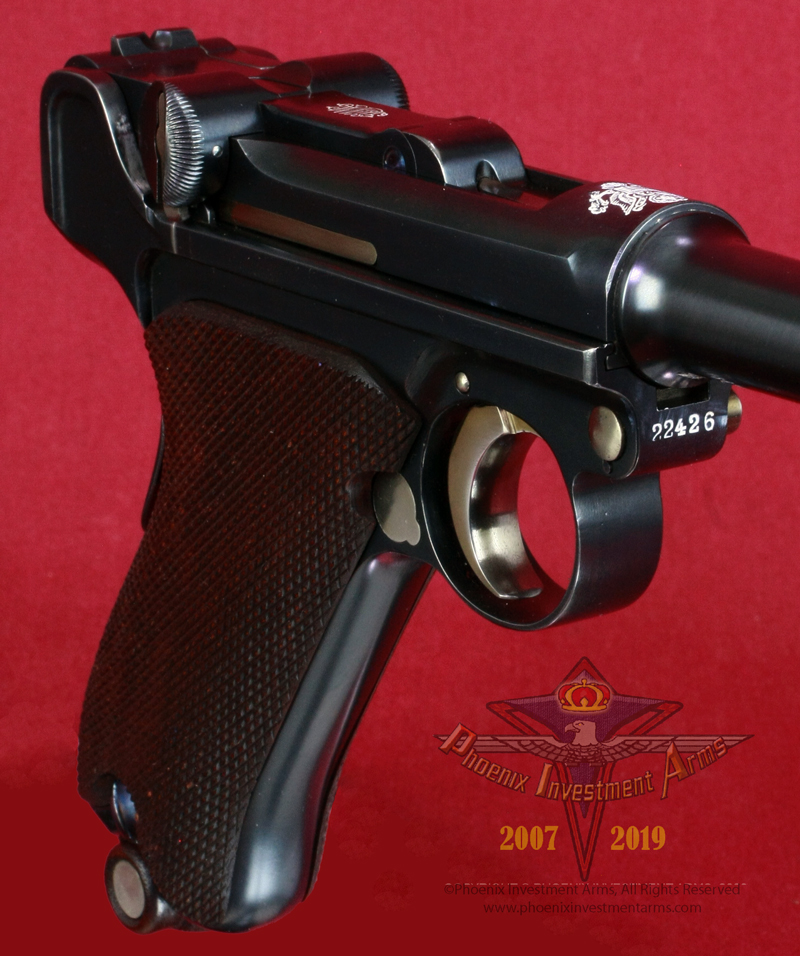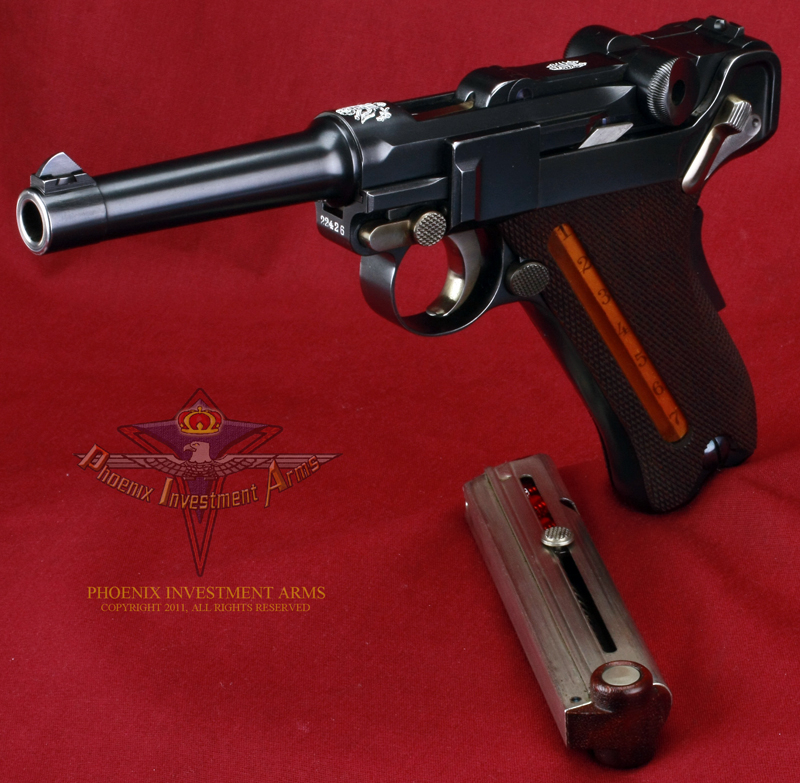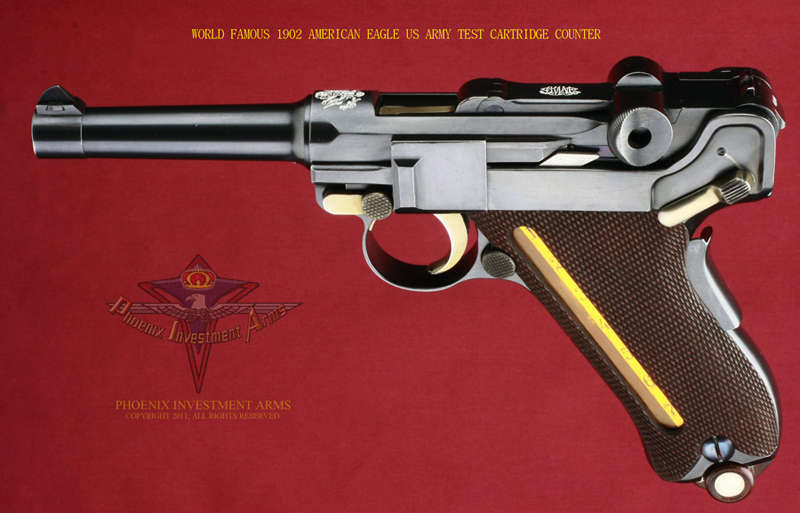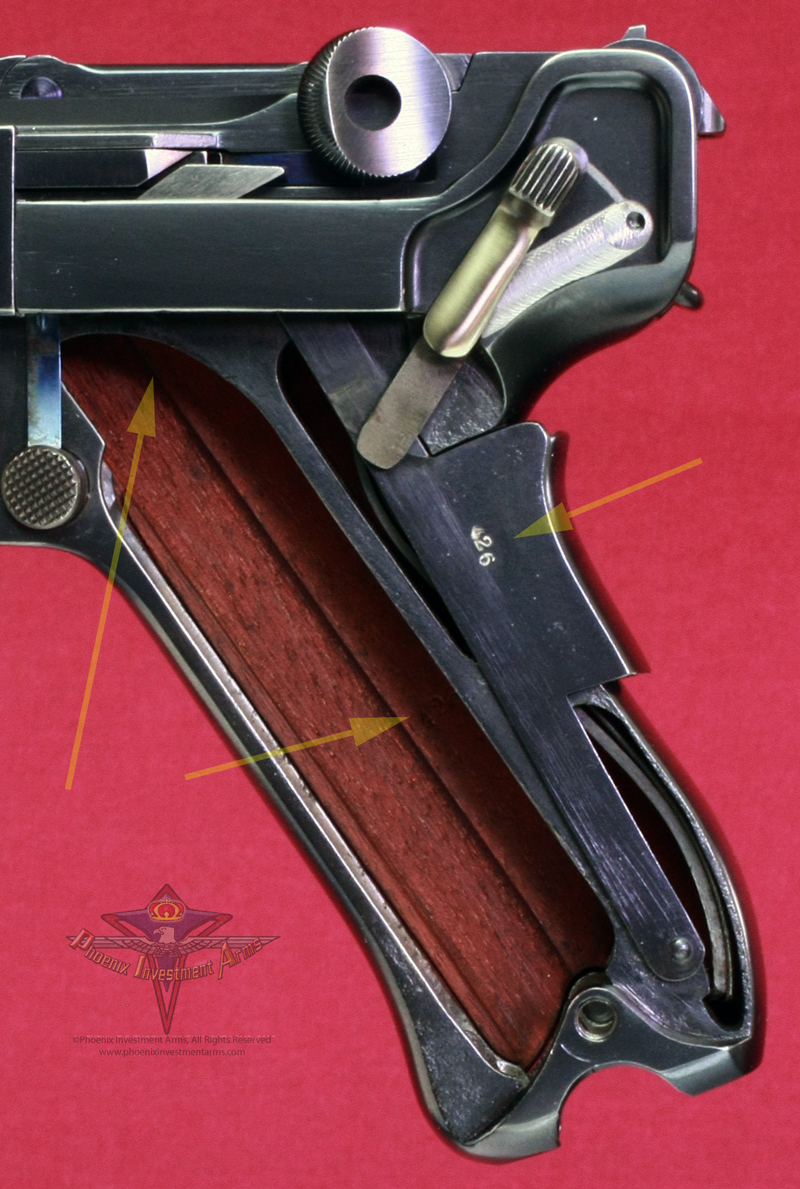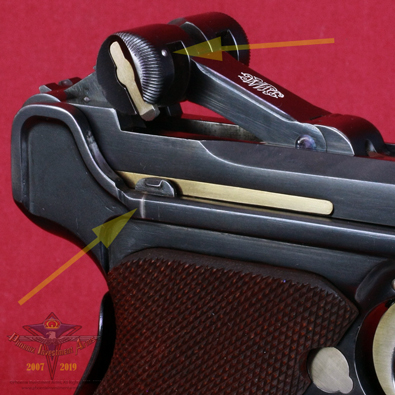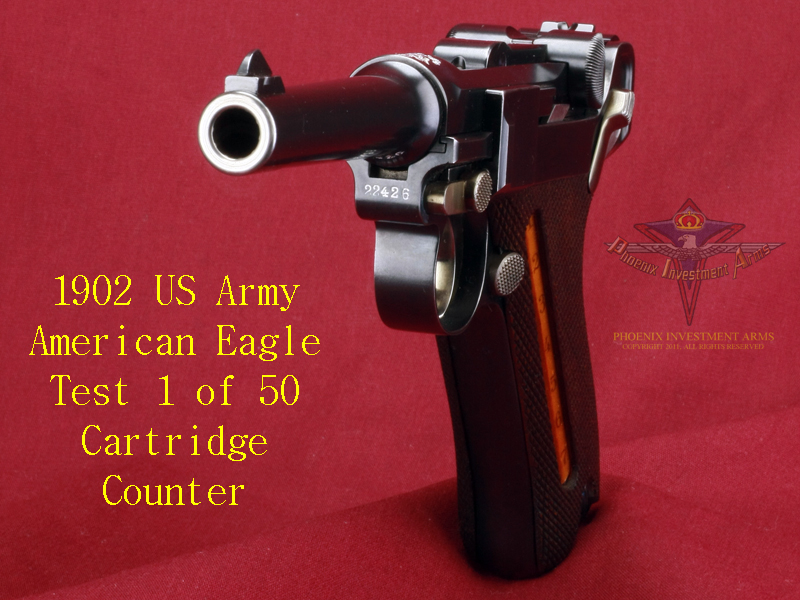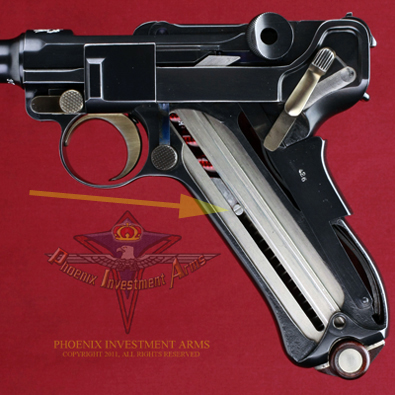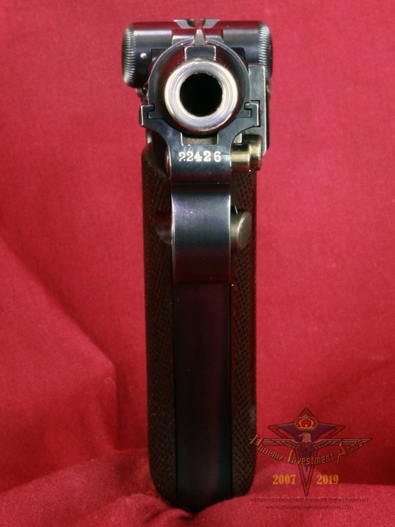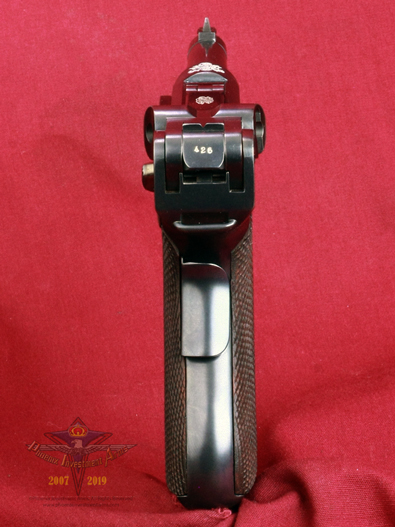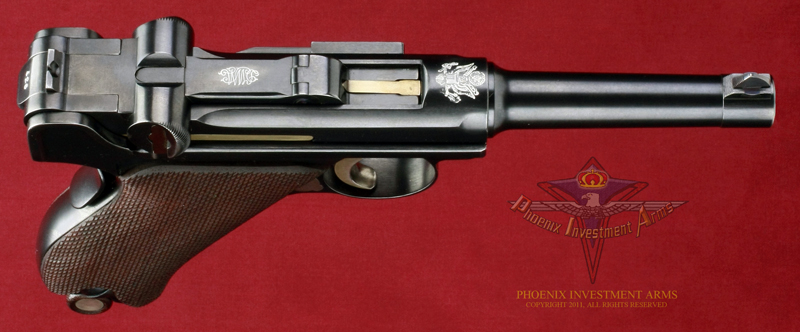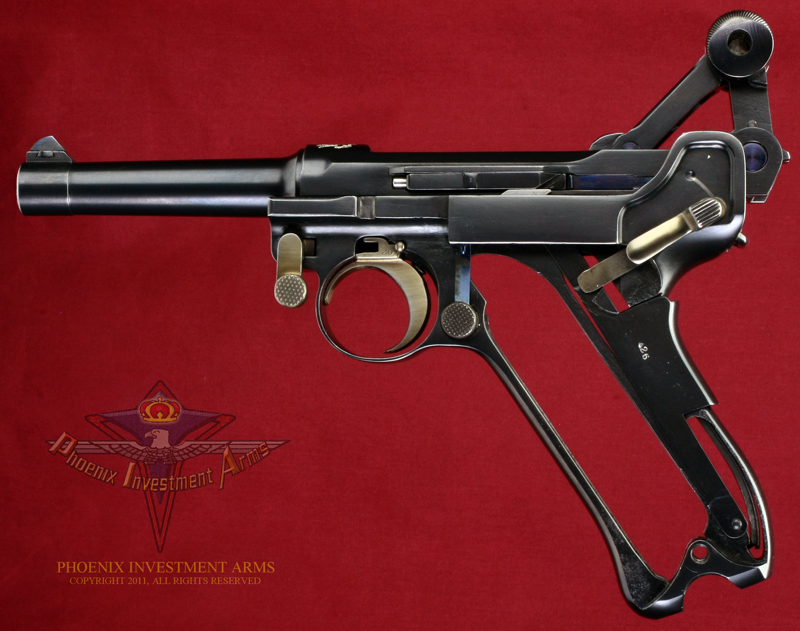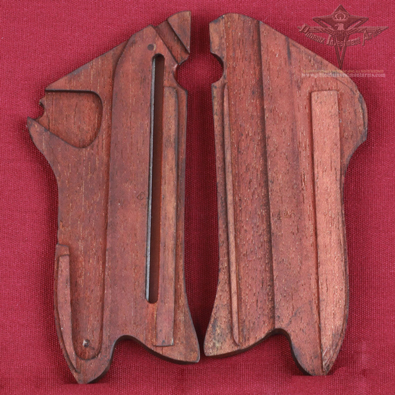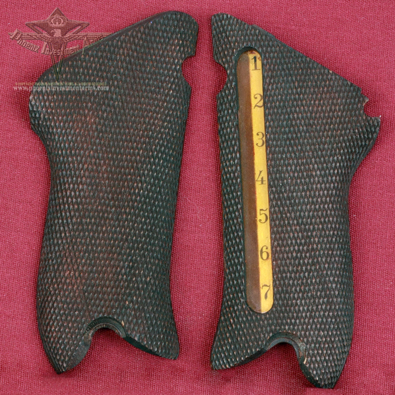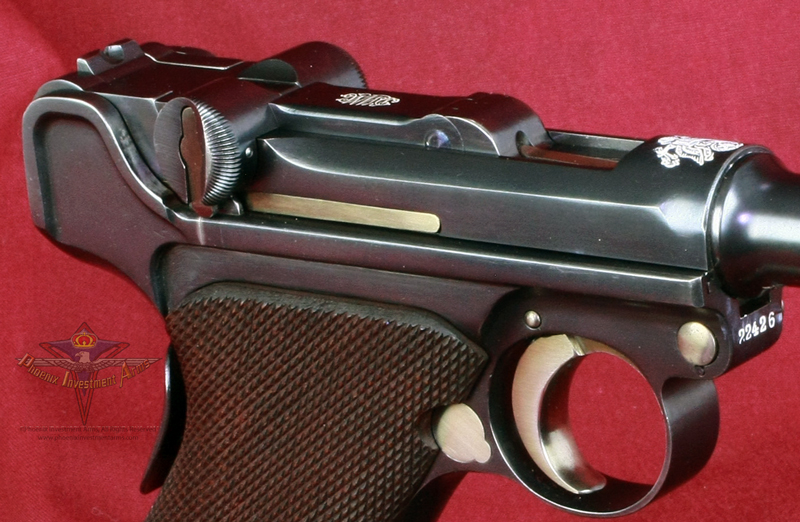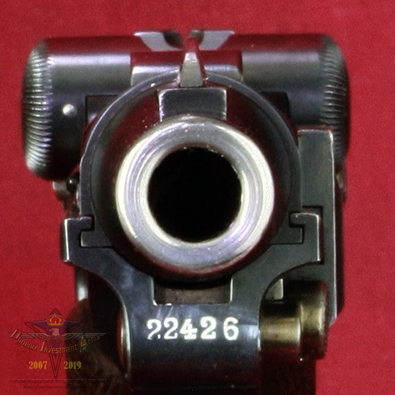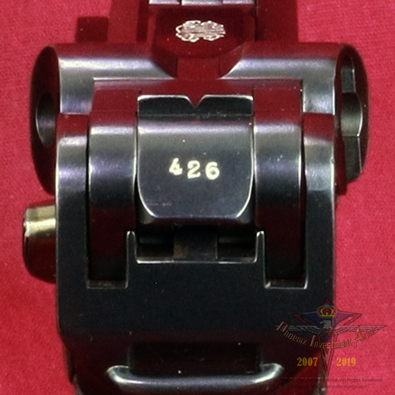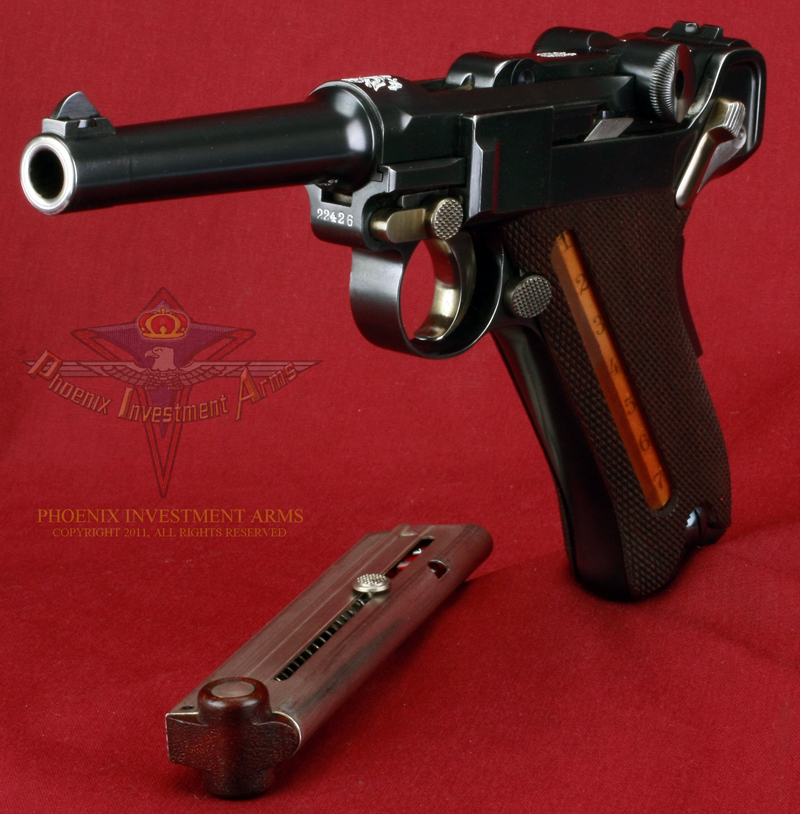1902 American Eagle
Cartridge Counter
PHOENIX INVESTMENT ARMS -
PREMIUM COLLECTOR LUGERS
Genuine German
Luger - Largest Variety of Lugers Offered
Home | Post WWI DWM | Erfurt Lugers | Mauser | Simson Suhl | Krieghoff | Vickers, Ltd | Swiss Bern | Other Guns
Bottom of Page
|
|
This is a DWM, 1902 American Eagle
Cartridge Counter, in 9mm with the 100mm (4") Fat Barrel with the early
dished toggles and toggle lock on the right side of the receiver. This has
the grip and thumb safety, walnut checkered grips and came with the
decorative disc in the magazine (commonly called Swiss magazine
because it started with their models). (2119) |
|
|
|
NOTE: Photographs taken today with the high mega-pixel camera show more than we sometimes can see with the human eye. Magnified close-ups show us tool marks and natural surface conditions that one normally doesn't see in the ordinary handling of the weapon. Photographs are copyrighted, all rights reserved, any extraction, reproduction or display of gun pictures without the express consent of the Phoenix Investment Arms is strictly prohibited. Thank you for your cooperation. Please visit Legal (tabbed) for Conditions of Sale. |
